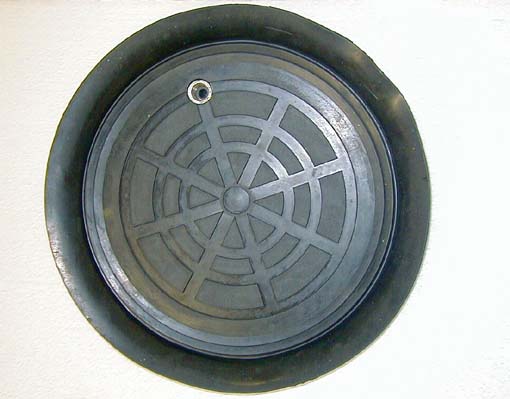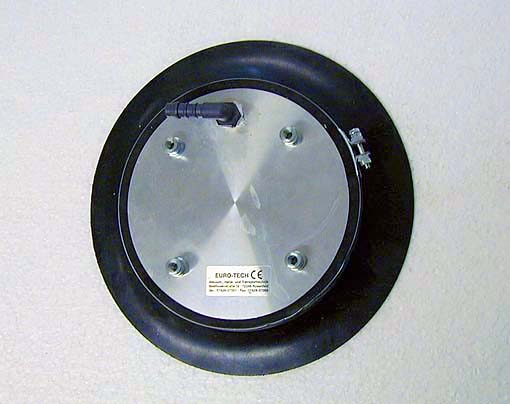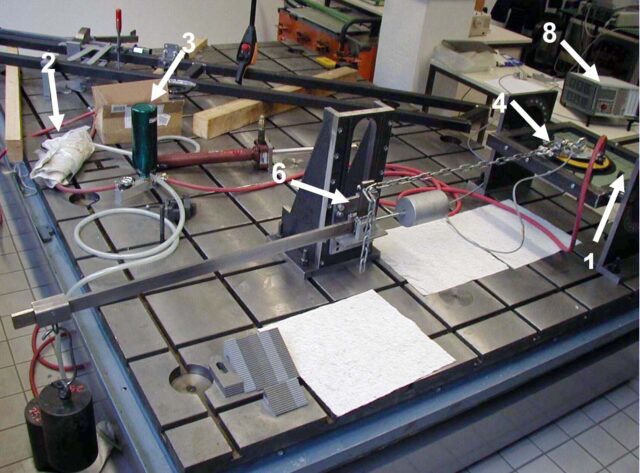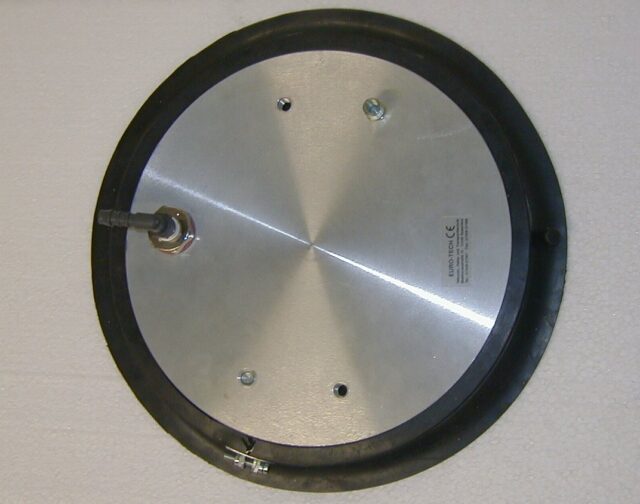

Carrying Capacity of Suction Cups
Euro-Tech
(similar to 388 and 540 from Pannkoke)
An investigation by the Fachhochschule Kiel
(executed in the first half year 2001)
conducted by Professor Dr.-Ing. Michael Klausner
Experiment set-up
Picture 1: The suction cups are placed on a clean glass plate (1) and connected to 0.6 bar partial vacuum. A Venturi jet with noise insulation coat (2) as well as a vacuum tank (3) provides the vacuum system.
On the suction cup is exerted via the weight loaded lever (6) a statical force via the load cell (4) (type: HBM U2B 10 kN) (6), which is taken over at the measuring bridge (8) (type: HBM MGC55-AB1).

Execution of the trial
The suction cups are pulled parallel to the glass plate which corresponds to the vertical lifting of glass panes.
In a first trial the suction cups are loaded quasi-static with a constant force and the tensile force and the slipping movements are measured. The force is then increased in steps if there is no slipping movement to be noted within 5 minutes. The suction cups are lifted after each load increase and again set to the glass plate and impinged with vacuum.
In a second trial section the suction cups are dynamically loaded till the tear off and the maximum force is registered at the measuring bridge by the “Peak-Hold-display“.
Results
Suction cup Euro-Tech (similar to Pannkoke suction cup 388)

Static load:
The maximum static force is 1800N.
At further increase of the tensile force the suction cup rubber released from the aluminium base plate (failure picture similar to picture 3).
Dynamic load:
At a force of 4128 N the suction cup rubber stays on the glass plate and the metal ring which holds the rubber on the suction cup base plate deforms itself. Afterwards the suction cup rubber releases from the base plate, the suction cup breaks and the rubber tears off from the glass plate. In picture 3 the damage situation is shown.
From that we get the conclusion that this suction cup has a high failure potential due to the mechanically low overload-proof rubber metal connection at force peaks. Such force peaks can arise by swinging of the load or by lifting processes, especially at hydraulic forces.

Suction cup Euro-Tech (similar to suction cup 540 from Pannkoke)

Static load:
| measuring time 5 minutes | |
| Force [N] | Distance [mm] |
| 780 | slips |
| 707 | slips |
| 637 | slips |
| 651 | 1 |
| 642 | 0 |
| 640 | 0 |
| 636 | 0 |
| 632 | 0,5 |
| 620 | 0 |
| 615 | 0 |
| 565 | 0 |
Dynamic Load:
| Test No. | Force [N |
| 1 | 1368 |
| 2 | 1415 |
| 3 | 1374 |
| 4 | 1420 |
| 5 | 1390 |
| 6 | 1415 |
| 7 | 1419 |
| 8 | 1412 |
| 9 | 1410 |
| 10 | 1411 |
| average value [N] | 1403,4 |
Result:
The suction cup can hold up to 641 N at static load.
At dynamic stress 1403 N are held.
